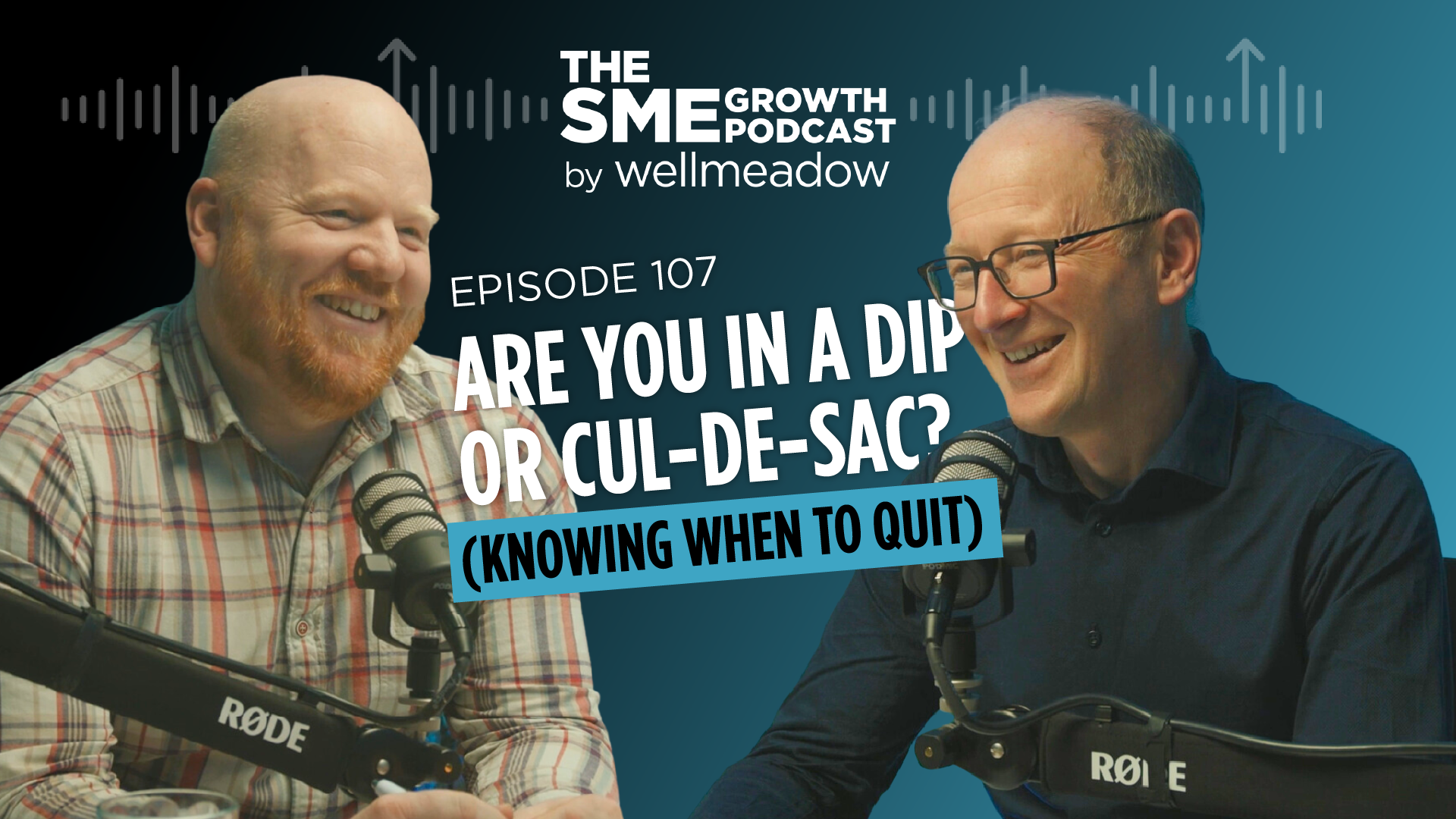In this deep-diving episode, Dave Parry and Richard Buckle tackle one of the most challenging aspects of business leadership - knowing when to persist through difficulties and when to make the strategic decision to quit. Drawing from Seth Godin's influential book "The Dip," they explore how business leaders can develop a framework for evaluating challenges, making strategic decisions, and allocating resources effectively. This timely discussion comes at a point when many SME owners are facing critical decisions about their business direction, offering practical insights for distinguishing between temporary setbacks that lead to breakthrough success and dead-ends that drain valuable resources.
Head over to our YouTube channel and subscribe for exclusive content and a chance to see the fully clothed versions of our episodes: @TheSMEGrowthPodcast.
You can listen to the full episode here
Listen to the full episode now



Key Topics Discussed
Understanding The Dip
- Exploration of how initial excitement in business ventures naturally leads to a challenging period of reduced momentum and increased difficulty
- Analysis of different types of dips that appear across business growth, team development, and project implementation
- Examination of how the dip concept relates to other business cycles like the Gartner hype cycle and team formation stages
- Discussion of why recognizing and preparing for dips is crucial for long-term business success
Strategic Decision-Making Framework:
- Investigation of how business leaders can differentiate between temporary setbacks and permanent dead-ends in their ventures
- Detailed analysis of the three key indicators that suggest a challenge is worth pursuing despite difficulties
- Exploration of how sunk cost fallacy influences decision-making and ways to overcome this cognitive bias
- Assessment of when and how to implement strategic quitting as a positive business strategy
Resource Allocation and Management:
- Discussion of how spreading resources too thinly across multiple projects can create artificial dips in performance
- Analysis of the relationship between scarcity of expertise and premium value in business offerings
- Examination of how successful businesses reallocate resources after strategic quitting decisions
- Investigation of methods for building alternative opportunities while managing current commitments
Business Growth Leadership:
- Understanding the importance of maintaining strategic alignment between business activities and core objectives
- Exploration of how to build and maintain momentum when pushing through challenging business periods
- Discussion of the role of external advisors and mentors in providing objective perspective during difficult times
- Analysis of how to maintain team motivation and engagement while navigating through business dips
Quotes to Remember
"If you wait until it's good enough to show your mum, you've waited too long."
"The marketing budget needs to be many multiples of the development budget."
"Don't let every single request for a feature be something that you feel will be the breakthrough."
"You're building a product for the market, not for individual users - stay focused on the bigger picture."
"In software development, what looks simple on the surface often masks deep complexity beneath."
Top Takeaways
- Start with Thorough Market Research: Before investing significant resources, conduct comprehensive market validation beyond friendly feedback. Understanding genuine market demand and willingness to pay is crucial for long-term success.
- Plan Marketing Investment Early: Allocate 2-10 times your development budget for marketing and customer acquisition. Even the best products need significant investment in awareness and education to succeed in the market.
- Build a Complete Development Team: Success requires more than just developers - you need business analysts, architects, UX designers, and testers working together. No single person can effectively fill all these roles.
- Maintain Clear Product Vision: Resist the temptation to add features based on individual user requests. Keep focused on your core value proposition and target market needs rather than chasing every potential enhancement.
- Focus on User Onboarding: Invest time in creating smooth onboarding experiences. Users need guidance to understand and adopt new software, regardless of how intuitive you think it is.
Head over to our YouTube channel and subscribe to The SME Growth Podcast. Share your thoughts and business challenges in the comments section of our community page: https://www.youtube.com/@TheSMEGrowthPodcast/community
